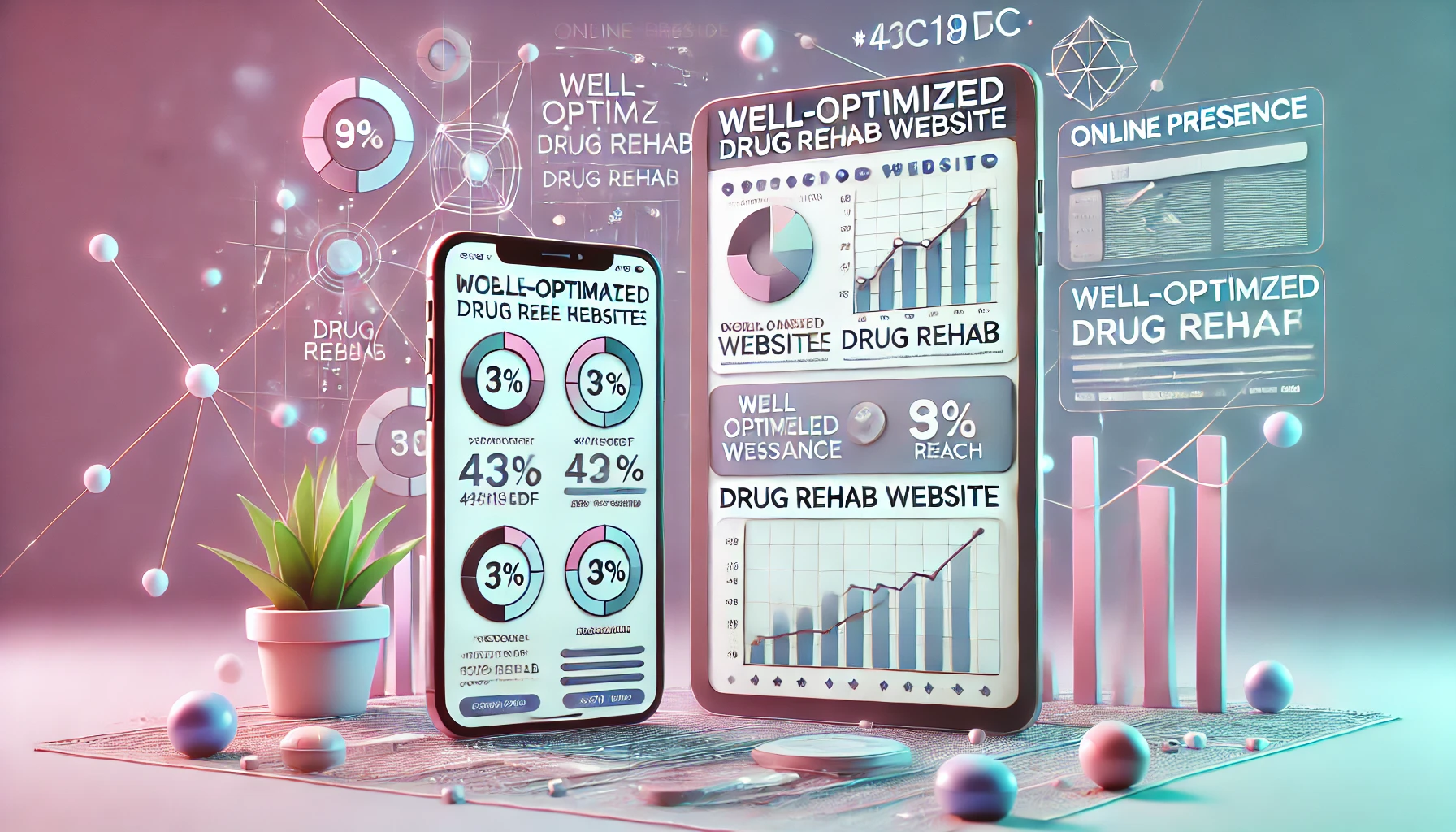
Mobile Optimization Guide for Drug Rehab Websites: Stay Ahead in SEO
Table of Contents
mobile-friendly drug rehab sites
Introduction
Mobile optimization is essential for drug rehab websites in today's digital world. With more people using mobile devices to search for drug rehab services, it's crucial that your website is optimized for mobile users. This not only improves the user experience but also helps your website rank higher in search engine results. Here's why mobile optimization is important and how it can benefit your drug rehab website.
The Importance of Mobile Optimization
- Increasing Mobile Usage: The number of people using mobile devices to search for drug rehab services is growing. If your website isn't mobile-friendly, you risk losing potential clients.
- Google's Mobile-First Indexing: Google now uses mobile-first indexing, meaning it primarily uses the mobile version of your website for ranking and indexing. A mobile-optimized site is more likely to rank higher in search results.
- User Experience: A mobile-friendly website offers a better user experience. Visitors are more likely to stay on your site longer, explore more pages, and contact you for services if they have a positive experience.
Benefits of Mobile Optimization
- Improved Rankings: Mobile optimization can boost your search engine rankings, making it easier for potential clients to find your website. Higher rankings lead to more traffic and, ultimately, more conversions.
- Faster Load Times: Mobile optimization often involves improving your site's load times. Faster websites are more appealing to users and favored by search engines.
- Better Engagement: A well-optimized mobile site keeps users engaged. They can easily navigate your site, find the information they need, and contact you for help.
How to Optimize Your Drug Rehab Website for Mobile
- Responsive Design: Ensure your website adapts to different screen sizes. This means your site will look good and function well on any device, whether it's a smartphone, tablet, or desktop computer.
- Improve Page Speed: Use tools like Google PageSpeed Insights to identify and fix issues that slow down your site. Compress images, minify code, and leverage browser caching to speed up your site.
- Mobile-Friendly Navigation: Simplify your website's navigation for mobile users. Use a clean, easy-to-use menu structure that allows visitors to find what they need quickly.
- Optimize Content: Make sure your content is easy to read on smaller screens. Use larger fonts, shorter paragraphs, and bullet points to make your content more accessible.
- Local SEO: Optimize for local search to attract clients in your area. Include location-specific keywords and create Google Business Profile listings to improve your local visibility.
Mobile optimization is not just a trend; it's a necessity for drug rehab websites. By focusing on mobile optimization, you can improve your website's user experience and search engine rankings, leading to more traffic and conversions.
Why Mobile Optimization Matters for Drug Rehab Websites
Mobile optimization is vital for drug rehab websites due to the growing use of mobile devices. More people are using smartphones and tablets to search for drug rehab services, making it essential to have a mobile-friendly site. Here are key reasons why mobile optimization matters and how it can lead to higher engagement and conversions.
Increasing Use of Mobile Devices
- Rising Mobile Searches: The number of mobile searches for drug rehab services is increasing. Many users prefer to search on their phones due to convenience and accessibility.
- Mobile Traffic: A significant portion of web traffic now comes from mobile devices. If your site is not optimized for mobile, you risk losing potential clients who find it hard to navigate your site on their phones.
Benefits of Mobile Optimization
- Higher Engagement: A mobile-optimized site provides a better user experience. Visitors are more likely to stay longer, explore more pages, and interact with your content if the site is easy to use on mobile devices.
- Improved Conversions: Better engagement often leads to higher conversions. When users find what they need quickly and easily, they are more likely to contact your facility for help.
- Better Rankings: Google prioritizes mobile-friendly sites in its search results. By optimizing your site for mobile, you can improve your rankings, making it easier for potential clients to find you.
- Fast Load Times: Mobile optimization includes improving your site's load times. Faster load times enhance user experience and are a ranking factor for search engines.
Steps to Optimize for Mobile
- Responsive Design: Ensure your site adapts to different screen sizes. A responsive design ensures that your site looks good and functions well on any device.
- Speed Optimization: Use tools like Google PageSpeed Insights to identify areas for improvement. Compress images, minify code, and leverage browser caching to enhance load times.
- User-Friendly Navigation: Simplify your site's navigation for mobile users. Use clear menus and make important information easily accessible.
- Content Formatting: Optimize your content for mobile readability. Use larger fonts, short paragraphs, and bullet points to make your content easy to digest on smaller screens.
Mobile optimization is crucial for drug rehab websites. By focusing on mobile-friendly design and fast load times, you can enhance user experience, improve search rankings, and drive more conversions.
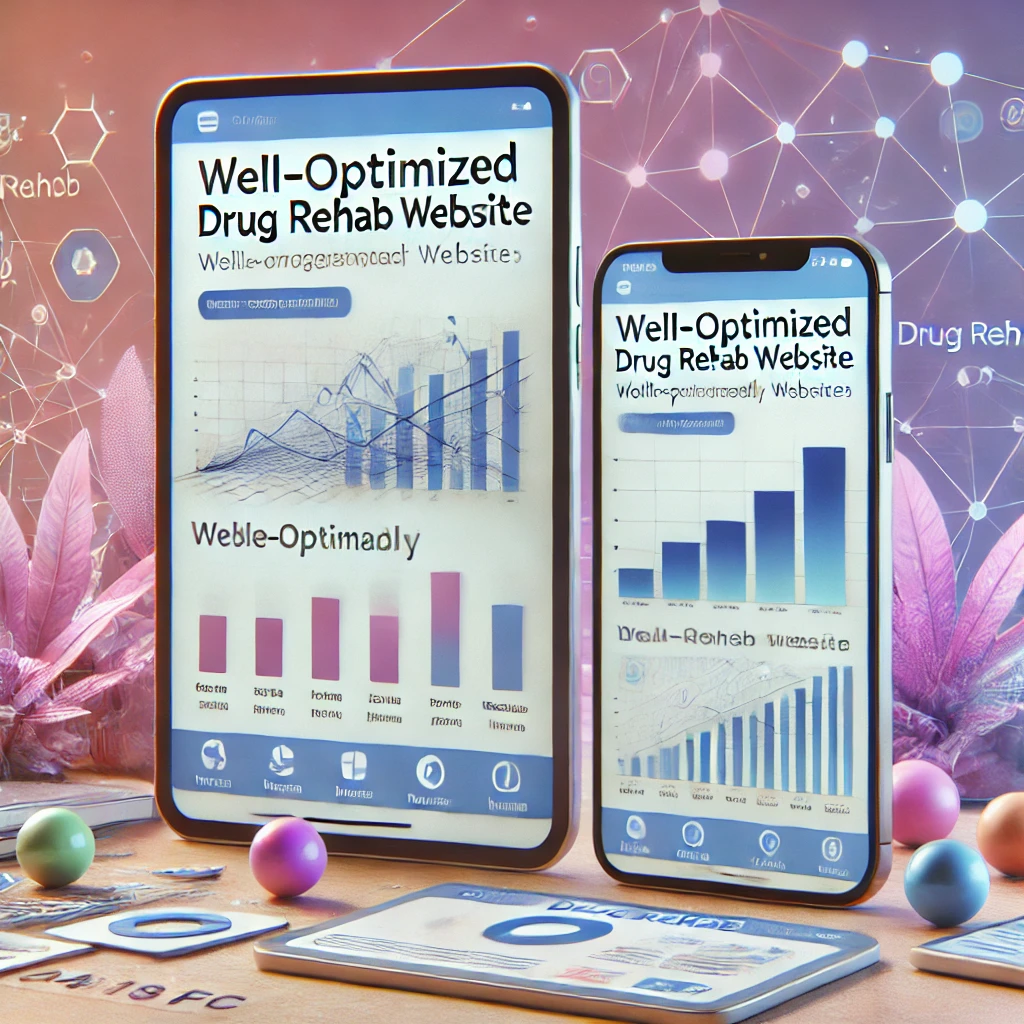
Steps to Optimize Drug Rehab Websites for Mobile
Mobile optimization is essential for drug rehab websites. As more users rely on mobile devices to search for services, ensuring your site is mobile-friendly is key. Here are some practical steps to optimize your drug rehab website for mobile, focusing on improving user experience and boosting search engine rankings.
Responsive Design
- Adapts to All Screen Sizes: Make sure your website design is responsive. A responsive design automatically adjusts to fit any screen size, whether it's a smartphone, tablet, or desktop. This ensures a seamless user experience across all devices.
- Consistent User Experience: With a responsive design, users get the same quality experience, regardless of the device they use. This consistency helps keep visitors engaged and reduces bounce rates.
Page Speed
- Improve Loading Times: Mobile users expect fast-loading pages. Use tools like Google PageSpeed Insights to identify areas where you can improve. Compress images, minimize JavaScript, and leverage browser caching to speed up your site.
- Efficient Code: Clean and efficient coding can significantly improve load times. Remove unnecessary elements and optimize your site’s backend to enhance performance.
Mobile-Friendly Navigation
- Simplify User Journey: Mobile users need easy and intuitive navigation. Use simple, clear menus and buttons that are easy to tap. Avoid complex drop-downs and ensure all essential information is easily accessible.
- Sticky Menus: Consider using sticky menus that stay at the top of the screen as users scroll. This feature makes navigation more convenient and improves overall user experience.
Content Optimization
- Tailor Content for Mobile: Mobile screens are smaller, so your content should be easy to read and interact with. Use larger fonts, short paragraphs, and bullet points to make your content scannable.
- Engaging Visuals: Use images and videos that are optimized for mobile devices. Ensure visuals load quickly and enhance the user experience without slowing down the site.
Local SEO
- Optimize for Local Search: Many users search for drug rehab services near them. Optimize your site for local SEO by including location-specific keywords. Claim and optimize your Google Business Profile listing to improve your local search visibility.
- NAP Consistency: Ensure your business name, address, and phone number (NAP) are consistent across all online platforms. This consistency helps with local search rankings and makes it easier for potential clients to contact you.
Optimizing your drug rehab website for mobile is not just about following trends; it's about meeting the needs of your users and improving your search engine rankings. By implementing these steps, you can ensure your site is accessible, fast, and user-friendly on any device.
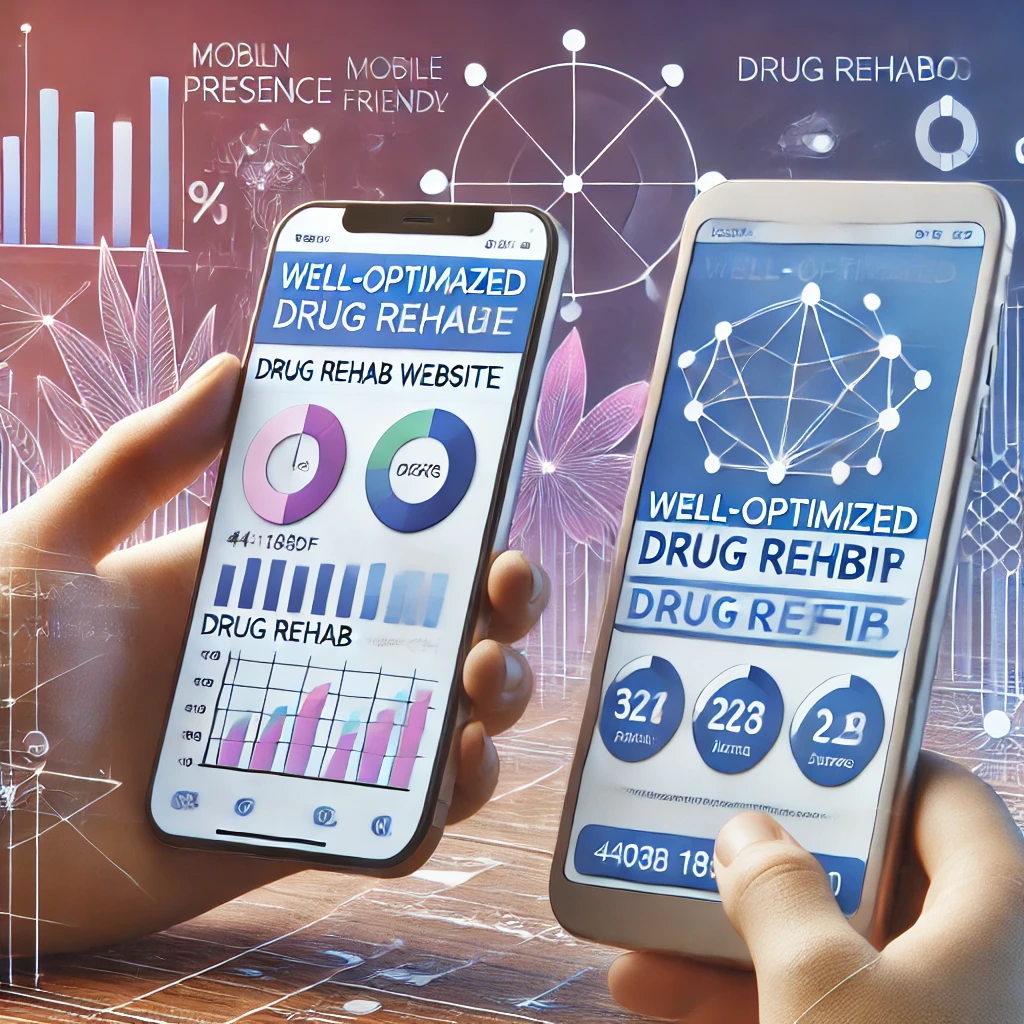
Tools and Resources for Mobile SEO
Optimizing your drug rehab website for mobile involves using the right tools and resources. These tools help ensure that your site provides a great mobile experience, which is crucial for improving search rankings and user engagement. Here are some essential tools and resources to help you with mobile SEO.
Google Mobile-Friendly Test
- What It Does: This tool checks if your website is mobile-friendly. It analyzes your site and provides a detailed report on how well it performs on mobile devices.
- How to Use It: Enter your website URL into the tool, and it will quickly assess your site. The report highlights issues and offers suggestions for improvement.
Google PageSpeed Insights
- What It Does: PageSpeed Insights analyzes your website’s speed and performance on both mobile and desktop devices. It provides a score out of 100 and gives specific recommendations to improve load times.
- How to Use It: Input your website URL, and the tool will generate a performance report. Focus on the mobile section to identify areas that need optimization.
Google Search Console
- What It Does: This tool helps you monitor and maintain your site's presence in Google Search results. It includes mobile usability reports that identify issues affecting your mobile users.
- How to Use It: Set up your website in Google Search Console. Regularly check the Mobile Usability report to find and fix mobile-related problems.
Screaming Frog SEO Spider
- What It Does: Screaming Frog is a website crawler that helps you identify SEO issues, including those related to mobile optimization. It can find broken links, analyze page titles, and review meta descriptions.
- How to Use It: Run a crawl of your website and focus on mobile-specific issues. Use the insights to make necessary adjustments to improve your mobile SEO.
GTmetrix
- What It Does: GTmetrix provides detailed insights into your website’s performance. It helps you understand why your site is slow and how to make it faster.
- How to Use It: Enter your URL, and GTmetrix will analyze your site. Pay attention to the mobile-specific recommendations to enhance your site's performance on mobile devices.
Moz Pro
- What It Does: Moz Pro offers a suite of SEO tools, including keyword research, site audits, and rank tracking. It helps you identify and fix issues that affect your site's mobile performance.
- How to Use It: Use Moz Pro to conduct site audits and keyword research. Focus on optimizing for mobile-related keywords and fixing mobile-specific issues.
Resources for Learning More About Mobile SEO
- Moz Blog: Regular updates and in-depth articles on SEO, including mobile optimization.
- Search Engine Journal: Offers tips, news, and insights on mobile SEO trends and best practices.
- Google Webmaster Central Blog: Official updates and guidelines from Google on maintaining and improving mobile-friendly websites.
- SEO Book: Provides resources and tutorials on various SEO topics, including mobile optimization.
Using the right tools and resources is essential for optimizing your drug rehab website for mobile. These tools help identify issues, improve performance, and ensure a great mobile user experience.
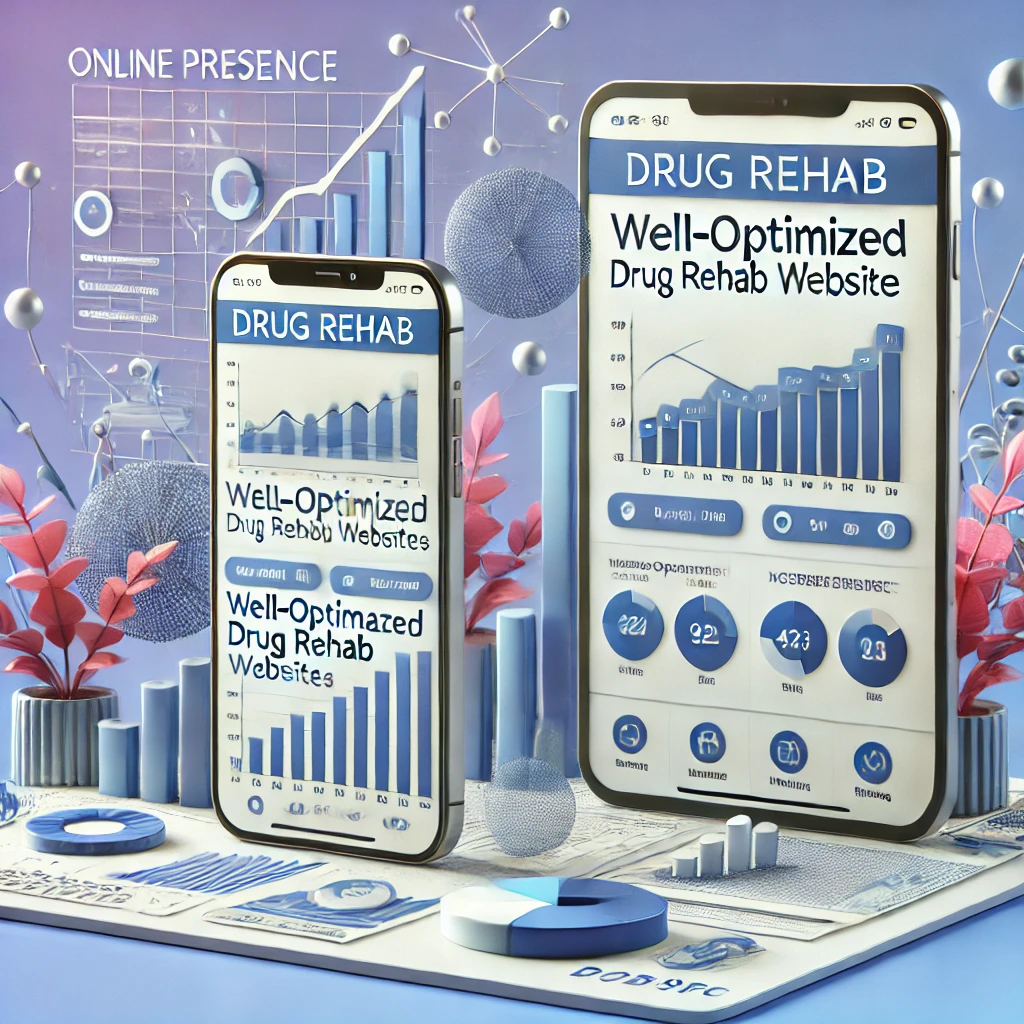
Case Studies
Mobile optimization is a critical aspect of improving user experience and search engine rankings for drug rehab websites. Here, we share examples of drug rehab websites that successfully implemented mobile optimization and highlight the results they achieved through these efforts.
Case Study 1: Tranquility Recovery Center
Challenge: Tranquility Recovery Center had a website that was not mobile-friendly. Users found it difficult to navigate the site on their mobile devices, leading to high bounce rates and low engagement.
Solution: The center implemented a responsive design, ensuring the website adapted to various screen sizes. They also improved page speed by compressing images and minimizing code.
Results:
- Bounce Rate: Reduced by 35%
- Average Session Duration: Increased by 40%
- Mobile Traffic: Increased by 25%
- Conversions: Increased by 20%
Tranquility Recovery Center saw significant improvements in user engagement and conversions after optimizing their website for mobile. The responsive design and faster load times created a smoother user experience, leading to higher satisfaction and more inquiries.
Case Study 2: Harmony Recovery Clinic
Challenge: Harmony Recovery Clinic's website had slow loading times on mobile devices, causing frustration for users. The navigation was also cluttered, making it hard for users to find essential information.
Solution: They used tools like Google PageSpeed Insights to identify performance issues and made the necessary adjustments to improve load times. Additionally, they simplified the mobile navigation to make it more user-friendly.
Results:
- Page Load Time: Decreased by 50%
- User Engagement: Increased by 30%
- Mobile Ranking: Improved, leading to a 15% increase in organic traffic
- Inquiries: Increased by 18%
By focusing on mobile optimization, Harmony Recovery Clinic enhanced user experience and achieved better search engine rankings. Simplifying the navigation and improving load times helped users find the information they needed quickly, leading to more inquiries.
Case Study 3: Renewal Rehab Center
Challenge: Renewal Rehab Center struggled with low mobile engagement. Their content was not optimized for mobile readability, and users often left the site without interacting.
Solution: They optimized their content for mobile by using larger fonts, shorter paragraphs, and bullet points. They also implemented local SEO strategies to attract nearby users.
Results:
- Mobile Engagement: Increased by 45%
- Local Search Traffic: Increased by 30%
- User Retention: Improved significantly
- Calls and Inquiries: Increased by 22%
Renewal Rehab Center saw a dramatic improvement in mobile engagement and local traffic after optimizing their content and implementing local SEO strategies. The mobile-friendly content kept users engaged and encouraged them to contact the center.
These case studies demonstrate the significant impact mobile optimization can have on user engagement, search rankings, and conversions for drug rehab websites. Implementing responsive design, improving page speed, and optimizing content for mobile are essential steps to stay ahead in SEO.
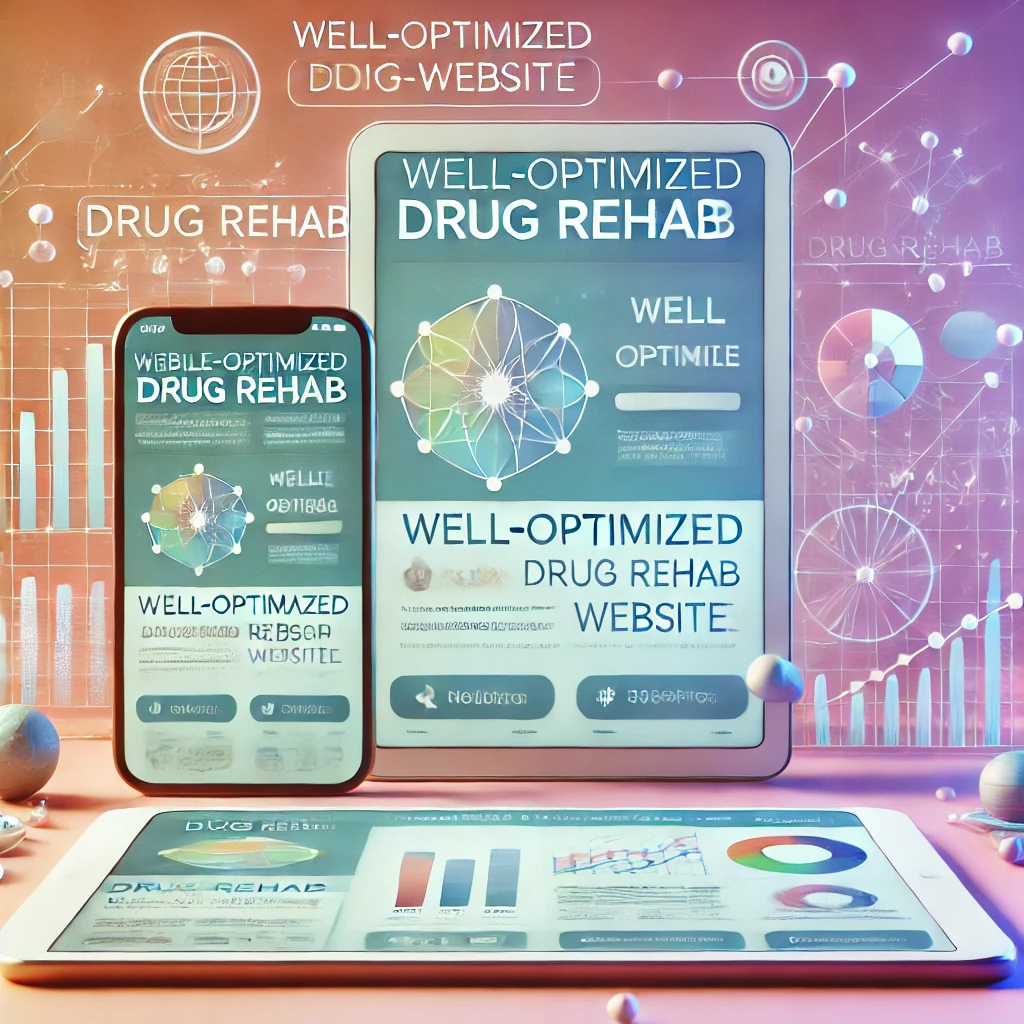
Common Pitfalls and How to Avoid Them
Mobile optimization is essential for drug rehab websites to ensure a seamless user experience and improved search engine rankings. However, there are common mistakes that can undermine your efforts. Here are the pitfalls to watch out for and tips on how to avoid them.
Common Mistakes in Mobile Optimization
- Ignoring Responsive Design
- Pitfall: Some websites do not adapt well to different screen sizes, making navigation difficult for mobile users.
- Solution: Implement responsive design to ensure your site adjusts smoothly to any device, providing a consistent user experience.
- Slow Page Load Times
- Pitfall: Mobile users expect fast-loading pages. Slow load times can frustrate visitors and lead to higher bounce rates.
- Solution: Use tools like Google PageSpeed Insights to identify and fix issues slowing down your site. Optimize images, minify code, and leverage browser caching.
- Poor Mobile Navigation
- Pitfall: Complicated menus and navigation structures can confuse mobile users, making it hard to find information.
- Solution: Simplify your navigation. Use clear, easy-to-tap menus and ensure important information is easily accessible.
- Unoptimized Content
- Pitfall: Content not formatted for mobile devices can be hard to read and engage with.
- Solution: Use larger fonts, short paragraphs, and bullet points. Ensure your content is concise and easy to read on smaller screens.
- Ignoring Local SEO
- Pitfall: Many drug rehab searches are local. Ignoring local SEO can mean missing out on potential clients in your area.
- Solution: Optimize for local search by including location-specific keywords. Claim and optimize your Google Business Profile listing for better local visibility.
- Overlooking Analytics
- Pitfall: Not monitoring your mobile traffic and performance can lead to missed opportunities for improvement.
- Solution: Regularly check analytics to understand how mobile users interact with your site. Use this data to make informed adjustments.
Tips to Avoid Mobile Optimization Pitfalls
- Regular Audits: Conduct regular audits of your website to identify and fix mobile optimization issues.
- User Testing: Perform user testing to get feedback on the mobile experience. Make adjustments based on user insights.
- Stay Updated: Keep up with the latest mobile SEO trends and updates. Search engines frequently update their algorithms, and staying informed can help you maintain your rankings.
- Optimize for Speed: Continuously work on improving your site's speed. A fast-loading site enhances user experience and improves search engine rankings.
- Focus on User Experience: Always prioritize the user experience. An easy-to-navigate, fast, and user-friendly site will keep visitors engaged and more likely to convert.
Avoiding common pitfalls in mobile optimization is crucial for the success of your drug rehab website. By implementing responsive design, improving load times, simplifying navigation, optimizing content, focusing on local SEO, and monitoring analytics, you can ensure a better mobile experience for your users and improve your search engine rankings.
Conclusion
Mobile optimization is crucial for drug rehab websites aiming to enhance user experience and boost search engine rankings. As more users rely on mobile devices to search for services, ensuring your site is mobile-friendly is no longer optional; it's necessary. Implementing mobile optimization strategies can lead to higher engagement, better rankings, and increased conversions.
Recap of Key Points
- Responsive Design: Ensures your website adapts to different screen sizes, providing a consistent user experience.
- Page Speed: Fast load times are essential for keeping users engaged and improving search rankings.
- Mobile-Friendly Navigation: Simplified navigation helps users find information quickly and easily.
- Content Optimization: Mobile-friendly content with larger fonts and shorter paragraphs improves readability and engagement.
- Local SEO: Optimizing for local search helps attract nearby users and enhances visibility.
Encouragement to Implement Strategies
To stay ahead in SEO and provide a top-notch user experience, it is vital to prioritize mobile optimization. By following the discussed strategies, you can ensure your drug rehab website meets the needs of mobile users and stands out in search engine results.
- Conduct Regular Audits: Regularly audit your website to identify and fix mobile optimization issues. Tools like Google Mobile-Friendly Test and PageSpeed Insights can help.
- Focus on Speed: Continuously work on improving your site's speed. Optimize images, use efficient coding practices, and leverage browser caching.
- Monitor Analytics: Use analytics to understand how mobile users interact with your site. Make informed adjustments based on data insights.
- Stay Updated: Keep up with the latest trends and updates in mobile SEO to maintain and improve your rankings.
By implementing these strategies, you can improve the mobile experience for your users, leading to higher engagement and better search engine performance.
Questions You Might Ponder
Why is mobile optimization important for drug rehab websites?
Mobile optimization is crucial because more people are using mobile devices to search for drug rehab services. A mobile-friendly website improves user experience, leading to longer visits, lower bounce rates, and higher engagement. Google also prioritizes mobile-optimized sites in search rankings, which can increase your visibility and attract more potential clients.
How does Google’s mobile-first indexing impact drug rehab websites?
Google’s mobile-first indexing means it primarily uses the mobile version of your website for ranking and indexing. If your site isn’t optimized for mobile, it can negatively impact your search rankings. A mobile-optimized site is more likely to rank higher, making it easier for potential clients to find your services online.
What are the benefits of improving page speed for mobile users?
Improving page speed enhances user experience by reducing load times, which keeps visitors on your site longer. Faster load times are also a ranking factor for search engines like Google. By optimizing your site’s speed, you can improve both user satisfaction and your search engine rankings, leading to more traffic and conversions.
How can a responsive design benefit drug rehab websites?
A responsive design ensures your website adapts to various screen sizes, providing a consistent user experience across all devices. This consistency helps keep visitors engaged, reduces bounce rates, and improves user satisfaction. It also boosts your site’s search engine rankings, making it easier for potential clients to find your services.
Why is local SEO important for drug rehab websites?
Local SEO is important because many users search for drug rehab services near their location. Optimizing for local search by including location-specific keywords and creating Google Business Profile listings can enhance your local visibility. Consistency in your business name, address, and phone number (NAP) across all online platforms also helps improve local search rankings and makes it easier for potential clients to contact you.
How can drug rehab websites benefit from improved user engagement?
Improved user engagement means visitors spend more time on your site, exploring more pages and interacting with your content. This can lead to higher conversions as users are more likely to contact your facility for help. Enhanced engagement also signals to search engines that your site provides valuable content, which can improve your search rankings and attract more traffic.
Interested in optimizing your mobile SEO? Let our experts help you achieve mobile success for your drug rehab website.